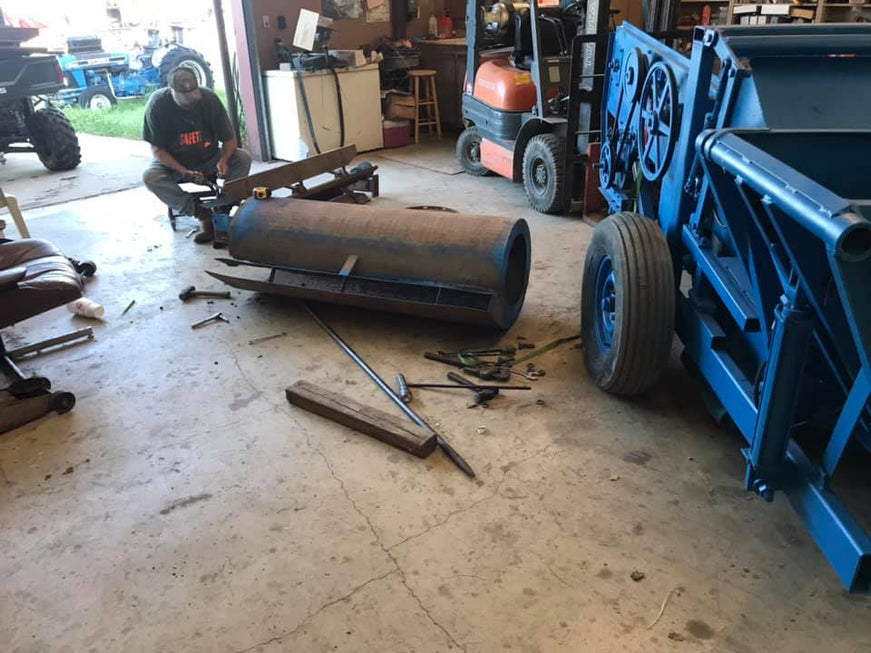
I've talked in past blogs about working on pecan equipment, but have not given many details as to what we do. During the harvest season, we operate at “full steam ahead”! While most repairs can be fixed during the early morning, daily maintenance, some things take more time.
Repair Pecan Equipment
Early in the season, our pecan shakers get either shaker pad lube or a shot of grease in the shaker pads to keep them lubricated everyday. This help minimize the damage caused by the shaker slipping off the tree. If you have shaken enough trees, it is going to happen sooner or later. We also grease the clamp arm. Our pecan harvesters get greased every morning and made sure all the bearings, belts and chains are tight. I always find it amazing how many maintenance issues can be solved when just a few minutes every morning.
Pecan Equipment needs some TLC
At the end of the pecan season, after all the pecans are harvested, the equipment gets a high pressure, hot water bath to remove all dirt and grease. Then it pulls through our shop. We have a well equipped shop to handle most task. On pecan harvesters, broken or missing “fingers” (pieces of rubber used to collect the pecans off the ground) are replaced. This is a process that takes some time, but worth every minute during the season.
All the equipment has the sprockets and idlers are checked for broken teeth and wear. If one is bad, be usually replace the chain as well. PTO yokes and U joints are also tested to make sure they are tight. While inspecting all these areas, the welder Mig welds all hairline cracks in the machines. We primer all bare metal to keep it from rusting. If no major parts have to be replace a harvester could be rebuilt in a few days. From there, the pecan harvesters are stored in the barn until the next pecan harvest season. We are also getting ready to clean up the orchards as well.
Cleaning the Cleaner?
In the cleaning facility and the shelling plant, work is also done to make the flow of pecans more efficient. Conveyors and sorting machines are added, rearranged, and modified to make the plants work at full capacity. Hopper and chutes have to be adjusted and rebuilt when machines are moved. This is always a time consuming task to make sure the pieces fit together since we are limited on space. At last count the raw processing plant had 27 electric motors all working together to process and clean the crop.
A couple of month of maintenance in the off season pays big dividends during pecan harvest. Less pressure to get the crop harvested and sold from having less breakdowns should keep everyone happy!

